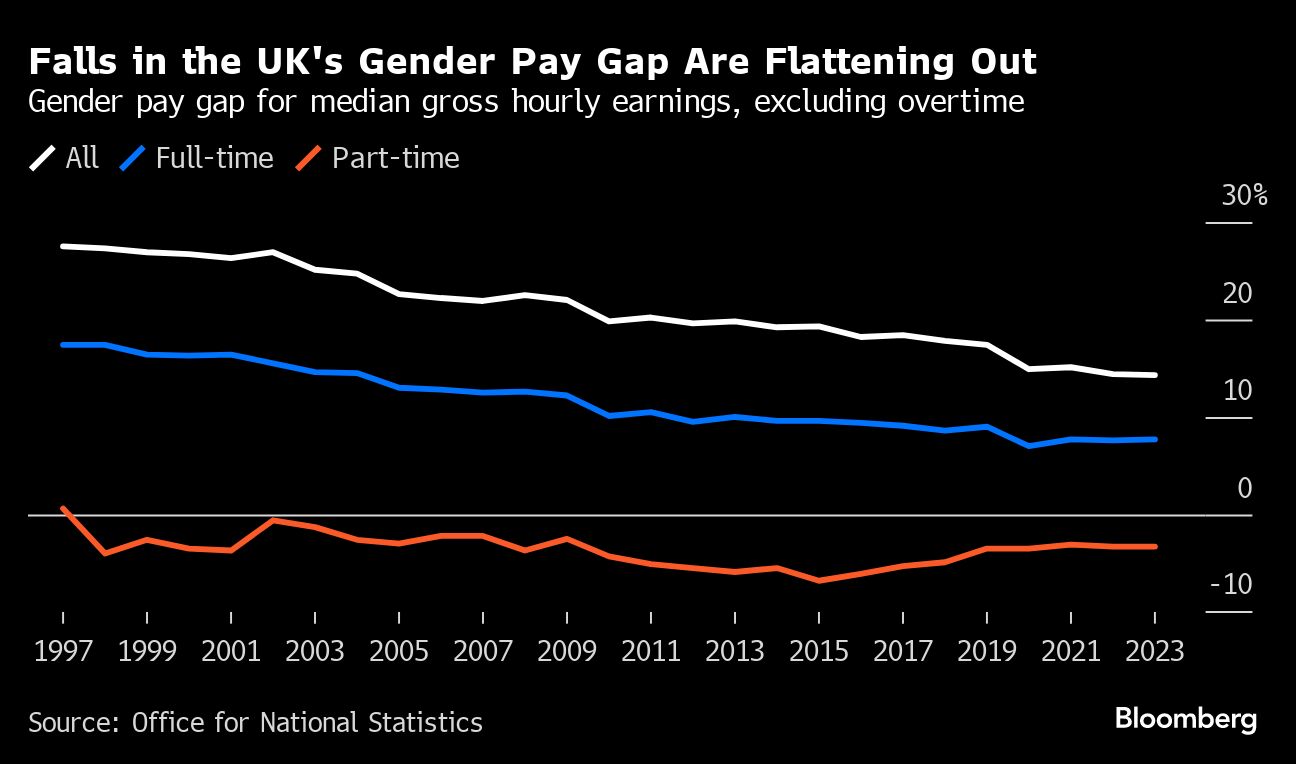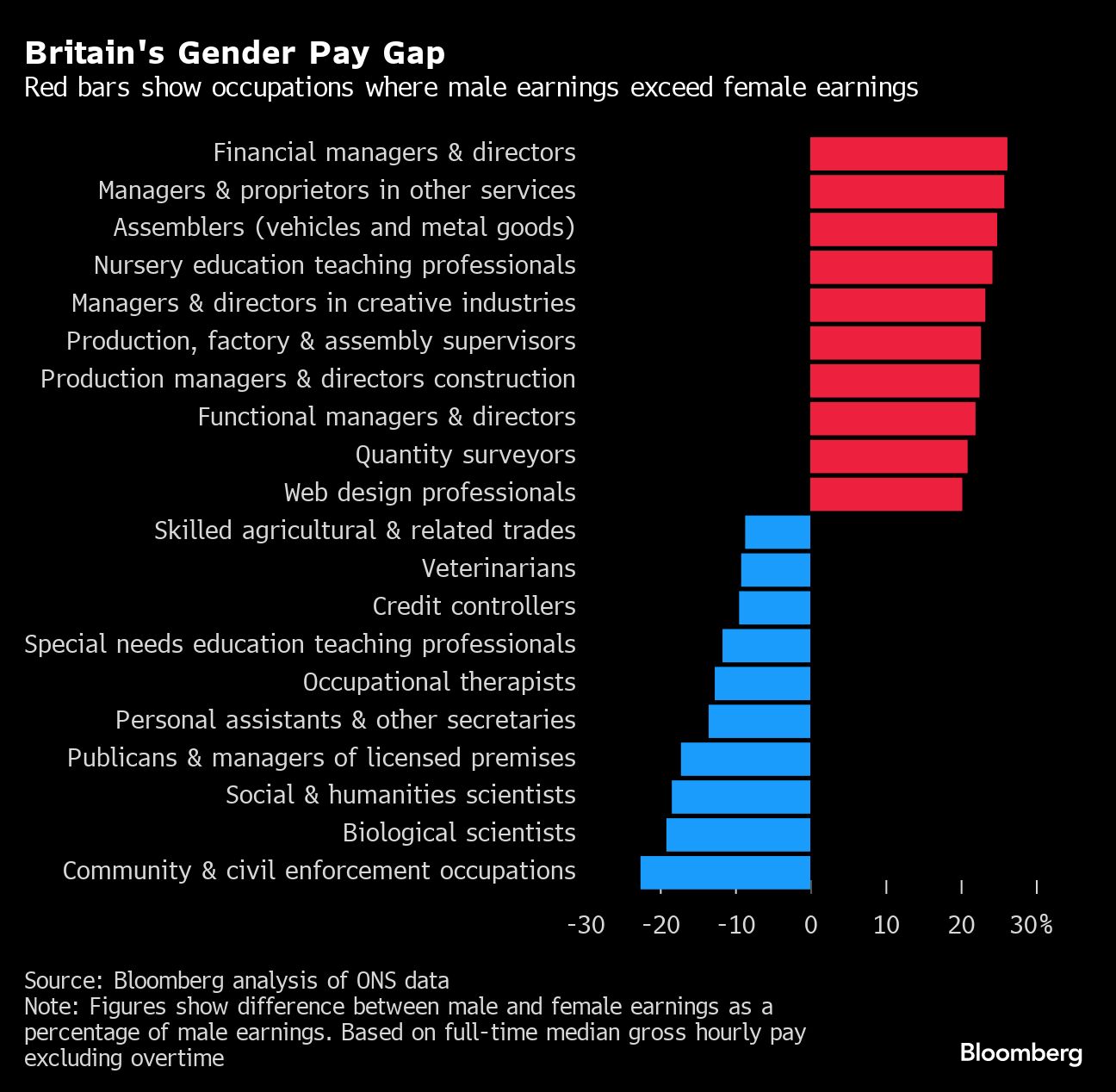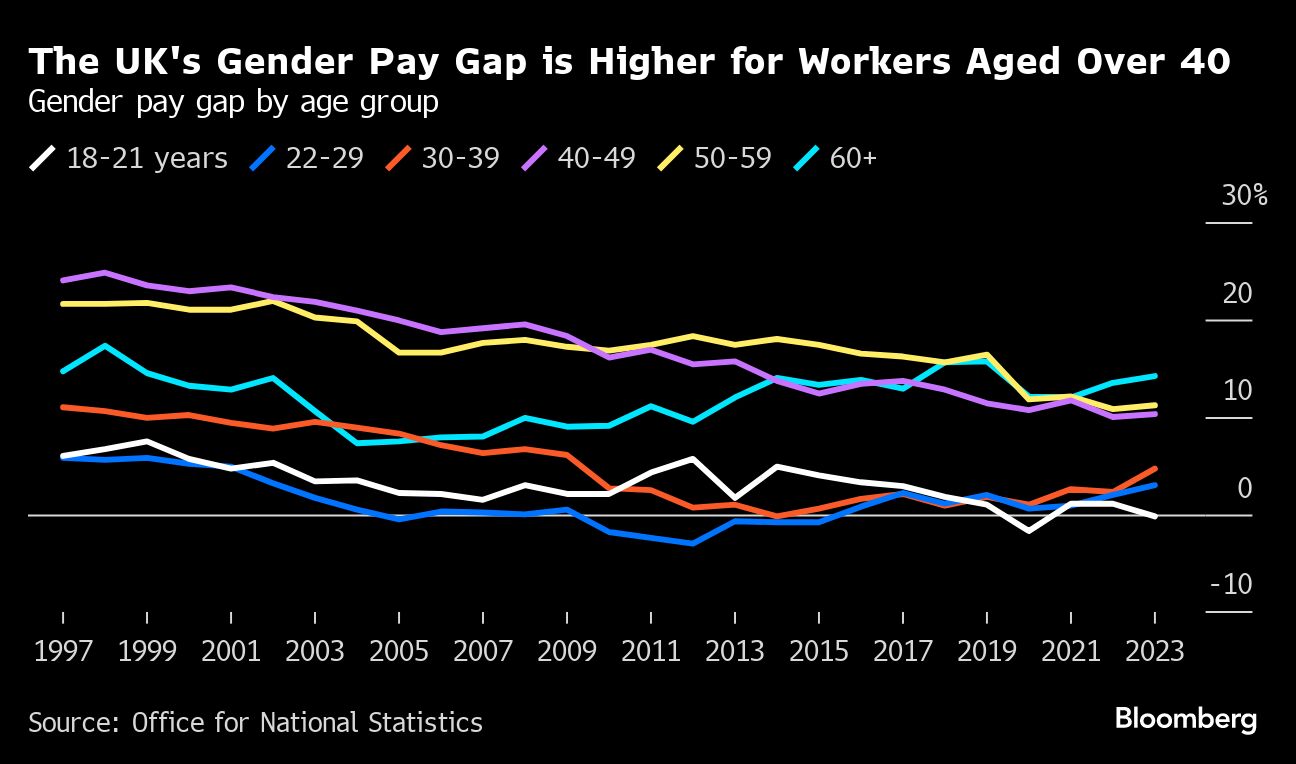(Bloomberg) — The UK failed to make any progress on the gender pay gap between 2022 and 2023 as the difference between men and women's wages crept up for those in full-time work.
Men are now paid 7.7% more than women in full-time jobs, up from 7.6% a year earlier, the Office for National Statistics said Wednesday. The difference is much wider among higher earners and among people over the age of 40.
While the gap was little-changed year-on-year, it is still well below the 9% seen before the Covid pandemic in 2019.

"Today's data means that Equal Pay Day falls on Nov. 22," said Jemima Olchawski, chief executive officer of the Fawcett Society, a gender equality charity. "This is the date when, based on average earnings, women start working for free until the end of the year.
"We need urgent and effective action from employers and government. Employers must stop asking discriminatory salary history questions, and we need mandatory ethnicity pay gap reporting."
She added that making flexible work "the default" would be a simple way in which employers and government could improve the pay gap, as requiring women — who still tend to be primary care-givers for children — to be in the office full-time "traps women in roles below their capabilities."

Black and minority women also tend to be hit harder by the pay gap, Olchawski added, calling for mandatory ethnicity pay gap reporting.
Anneliese Dodds, who speaks on women and equalities issues for the opposition Labour Party, blamed the widening pay gap on "failure" by the ruling Conservatives.
"Labour has a clear plan to get our economy growing," she said. "We will put women at the heart of this growth through our New Deal for Working People, with policies from flexible working to childcare and menopause support, which will support women at work to flourish and build their careers."
Among part-time employees, men earned 3.3% less than women — the same as the previous year, the ONS said. Women fill more part-time jobs, which in comparison with full-time have lower hourly median pay. According to the ONS's data, which was taken in April from the Annual Survey of Hours and Earnings, 86% of male employees are in full-time jobs compared to 61% of female employees.

The ONS data also found that the proportion of low-paid jobs in the UK economy fell to 8.9% in 2023, the lowest since the series began in 1997, from 10.7% a year earlier. The proportion of high-paid jobs also slipped slightly, to 23.4% from 23.8%. High and low pay is defined by its relationship to the median salary.
Nye Cominetti, Senior Economist at the Resolution Foundation think-tank, said Britain had a "bulging middle" in terms of pay. "This trend has been driven in large part by policy – with a rising minimum wage reducing the share low-paid employees, while more and more high-paid employees are moving into self-employment in order to reduce their tax bills," he said.
While the rise in the National Living Wage had helped to reduce low-paid work, Cominetti questioned "whether it's right to offer already very high earners additional tax breaks – which aren't available to most low and middle earners – simply by changing their employment status."
The highest proportions of low-paid employees were seen among elementary occupations, hospitality, young people aged 16-21 and in the East Midlands and Northern Ireland.
"Employees saw their pay growing at its fastest in cash terms since comparable records began, but once inflation is taken into account, people's pay fell again in real terms," said Nicola White, ONS head of earnings statistics.
"Thanks partly to increases in the National Minimum Wage, lower-paid groups saw faster earnings growth over the year than those higher up the pay scale."





